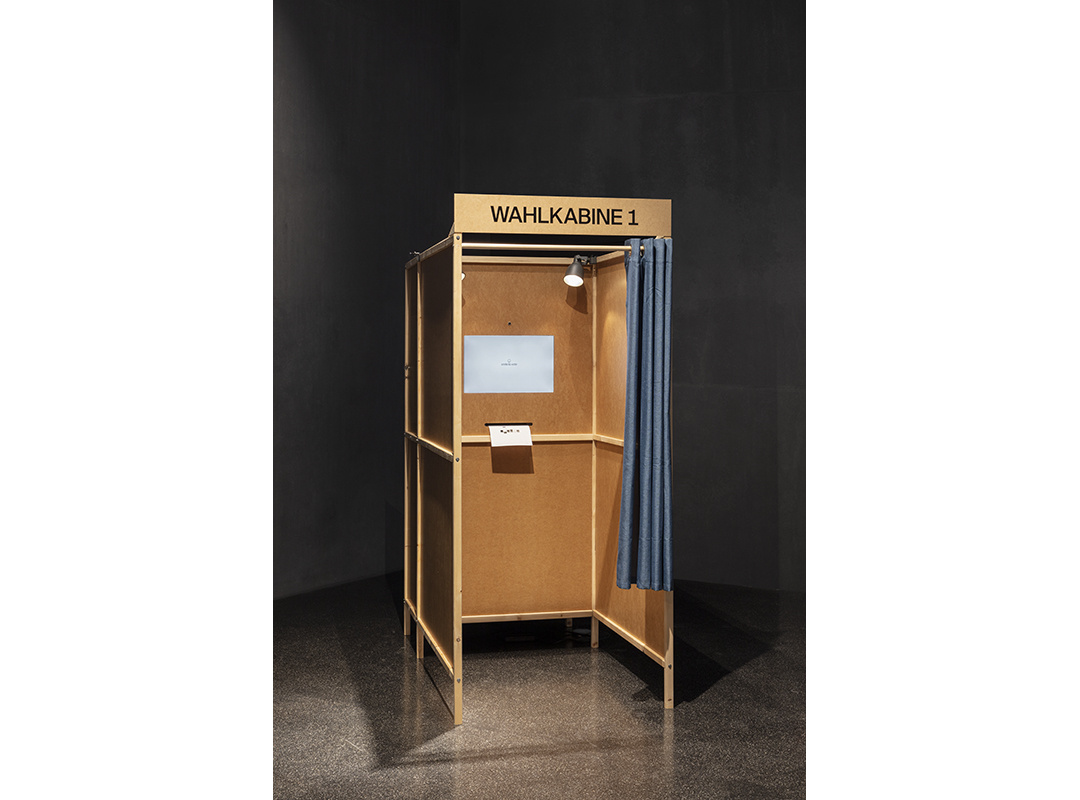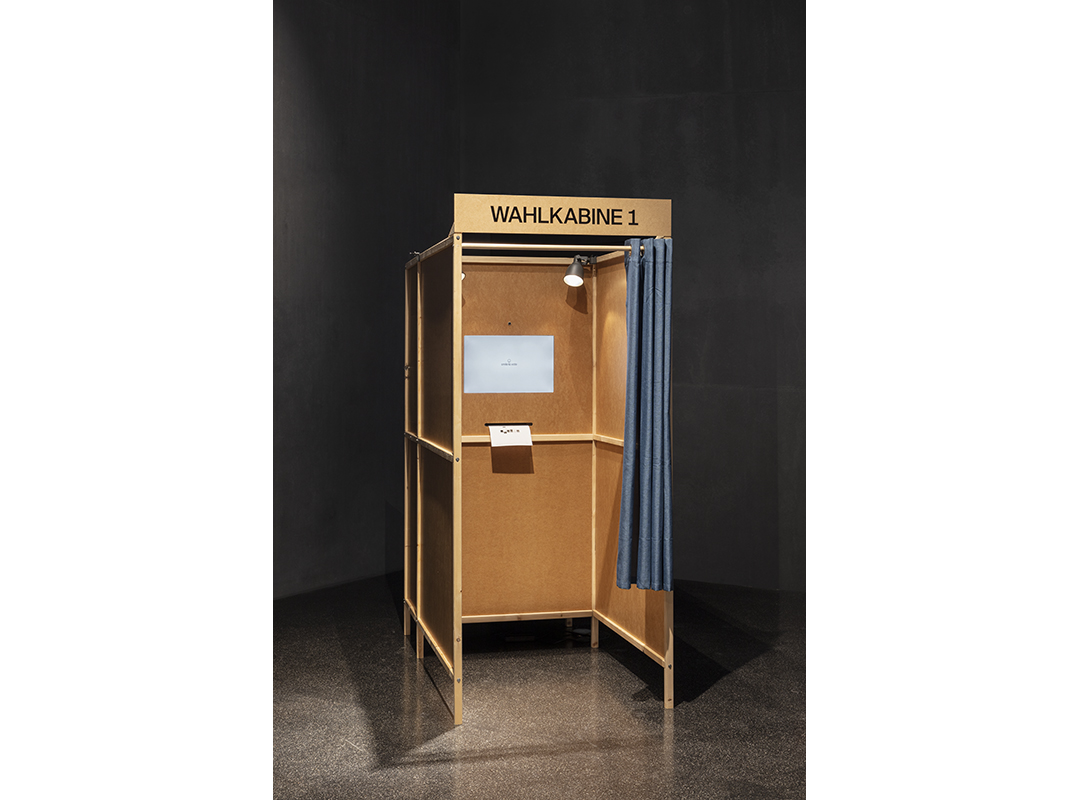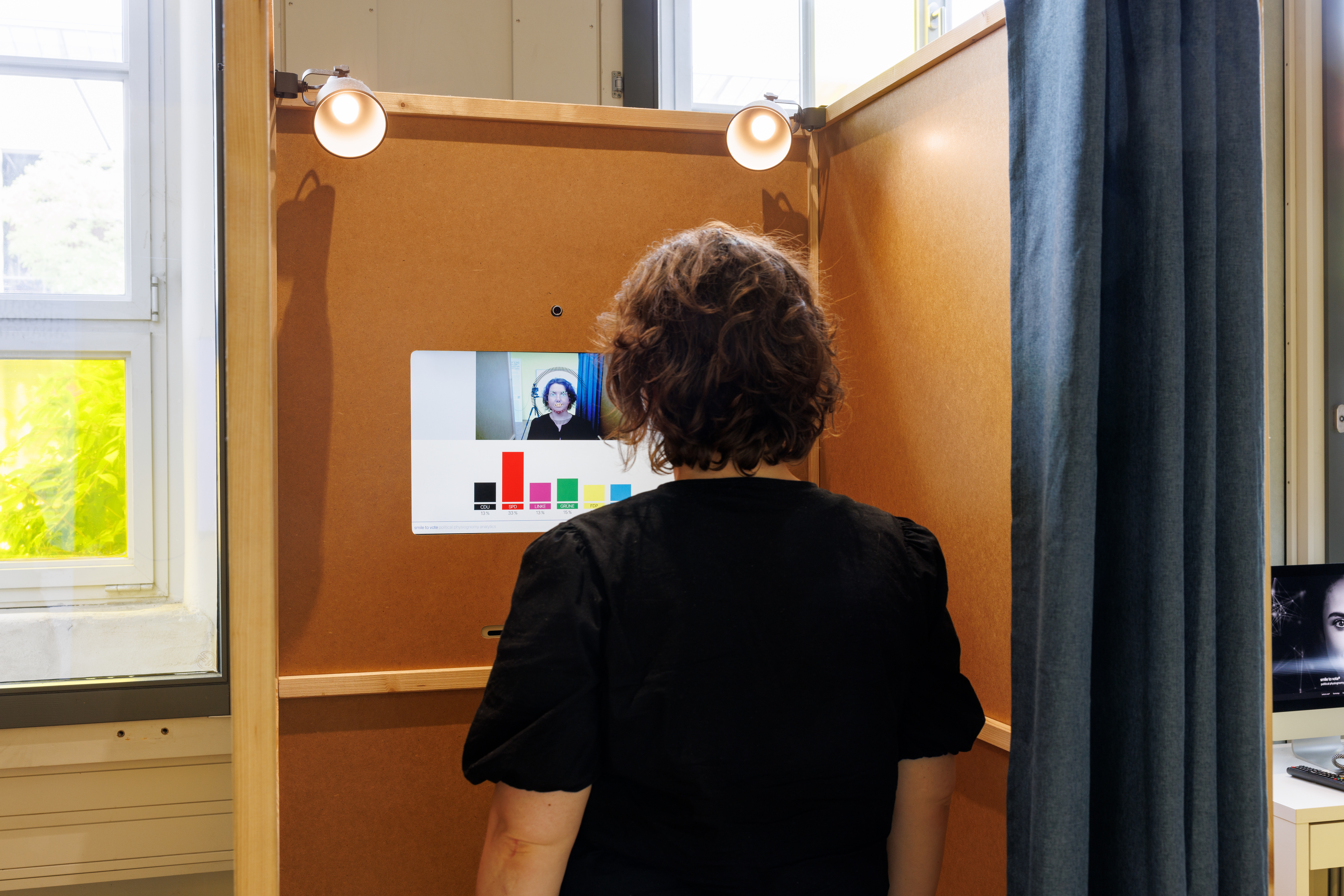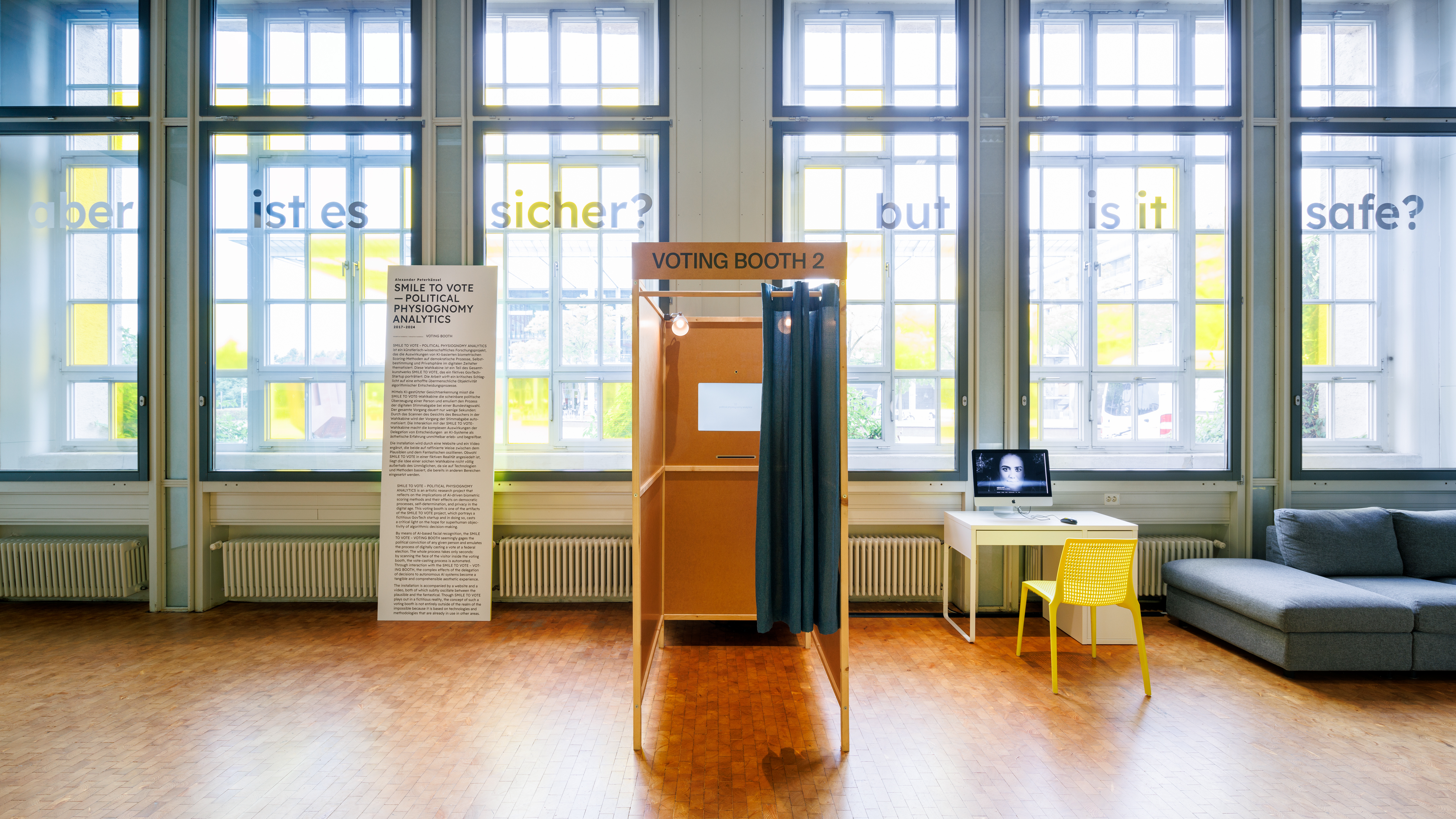- Artist/s
- Alexander Peterhänsel
- Title
- Smile to Vote – Political Physiognomy Analytics
- Year
- 2024
- Medium / Material / Technic
- Interactive Installation: VOTING BOOTH
Smile to Vote – Political Physiognomy Analytics (2017–2024) is an artistic research project that reflects on the implications of AI-driven biometric scoring methods and their effects on democratic processes, self-determination, and privacy in the digital age. The conceptual art work weaves together scientific and artistic methodologies. It uses speculative design methods to portray the fictitious GovTech startup "smile to vote" and its cutting-edge product of the same name: an ultra-efficient e-voting booth. Besides the voting booth, Smile to Vote features a deceptively realistic fake company website and a video that ironically mimics the standardized aesthetics of scientific presentational videos. It casts a critical light on the hope for superhuman objectivity of algorithmic decision-making.
By means of AI-based facial recognition, the Smile to Vote – Voting Booth seemingly gages the political conviction of any given person and emulates the process of digitally casting a vote at a federal election. The whole process takes only seconds: by scanning the face of the visitor inside the voting booth, the vote-casting process is automated. Through interaction with the Smile to Vote – Voting Booth, the complex effects of the delegation of decisions to autonomous AI systems become a tangible and comprehensible aesthetic experience. It raises questions about the (in)humanity of IT processes that supposedly help shape and determine the reality of our lives and aims to spark discussion between the sciences, politics, and society on desirable designs of IT infrastructures.
The installation is accompanied by a website and a video, both of which subtly oscillate between the plausible and the fantastical. Though Smile to Vote plays out in a fictitious reality, the concept of such a voting booth is not entirely outside of the realm of the impossible because it is based on technologies and methodologies that are already in use in other areas.
Credits
Scientific & artistic lead: Alexander Peterhänsel
Production: audiovisual architectures lab
Scientific support & software development: Julian Netzer
Scientific support & production assistant: Christopher Höhn
Carpentry: Max Bilger, Konstantin Hildebrand
With the support from: Berlin University of the Arts, European Commission



